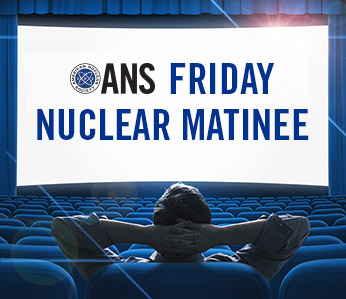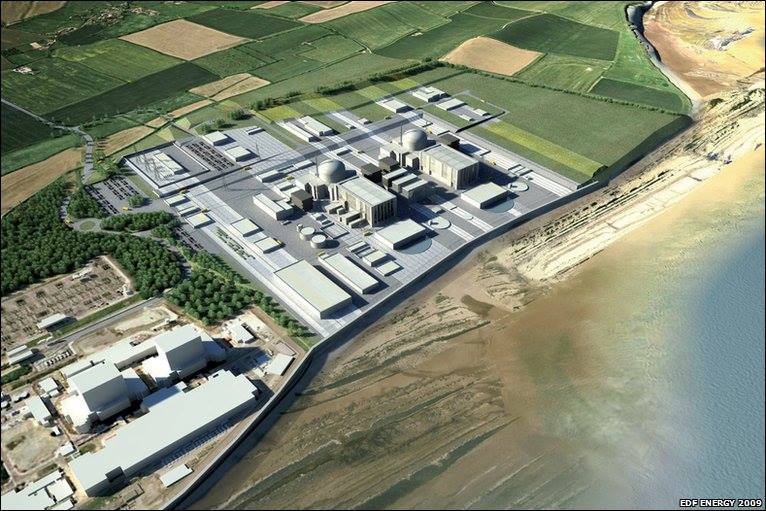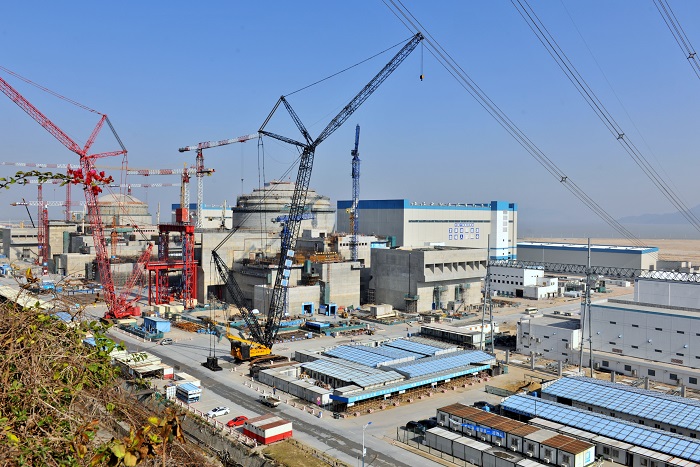A message from NV5, Inc.
Seconds Matter: Rethinking Nuclear Facility Security for the Modern Threat Landscape

A message from NV5, Inc.
Seconds Matter: Rethinking Nuclear Facility Security for the Modern Threat Landscape
No more silence. That was the rallying cry of our active band of nuclear supporters at the United Nations Framework Conference on Climate Change (COP21) in Paris over the past two weeks. The conference brought together nuclear societies, environmentalists, government and young generation representatives who agreed that we need to do a better job of communicating with the public and policymakers and stop allowing anti-nuclear advocates to have the loudest voice. We took a big step with our COP presence.
Starting a nuclear career as a nontraditional student can be daunting. I entered the academic world in 2009 as a 25-year-old with eight years of culinary arts under my belt. I am not your typical nuclear engineering student; I was not a model student and hadn't studied any higher-level math or physics courses in high school. I was a professional cook and chef instructor working with my hands and exploring the world of food for years before making a shift to nuclear.
In 1950, there were few nuclear reactors of any sort operating anywhere in the world, even though it had been eight years since the startup of the very first pile. In that intervening time, the Manhattan Project had given way to the U.S. Atomic Energy Commission (AEC) and a variety of reactor types were discussed, debated, designed, and scheduled. None of these was what we today would call a true commercial nuclear plant-built for the purpose of selling electricity to customers. Instead, they were test types, prototypes, and experimental or research types. Large reactors were running at Hanford; these did not produce electricity, but rather plutonium for AEC weapons programs. Atomic energy was still considered far too undeveloped for serious consideration as a straight commercial power producer, and private industry was still barred from most all activities in the nuclear industry, embryonic as it was.
 The 287th edition of the Nuclear Energy Blog Carnival has posted at Yes Vermont Yankee.
The 287th edition of the Nuclear Energy Blog Carnival has posted at Yes Vermont Yankee.
While the delegates discussing the actual COP agreement are sequestered in a building not accessible to others, there is important work going on elsewhere in Paris when it comes to nuclear energy advocacy. Even if the political solutions don't work here, there is no reason the technical solutions can't continue full steam ahead to produce clean energy for all who want and need it.

This week's Friday Nuclear Matinee is a video from Argonne National Laboratory marking the anniversary of the December 2, 1942, startup of the world's first "atomic chain reacting pile," or the first nuclear reactor constructed and operated anywhere by man.
By T. Marshall
American Nuclear Society President Eugene S. Grecheck and Director of Communications and Outreach Tari Marshall will be in Paris on December 2-9 as observer delegates and to represent one of the lead organizations for Nuclear for Climate. "It is critical that nuclear energy be front and center so that delegates understand the essential role that nuclear will play in reaching climate goals," Grecheck said.
If you were unable to be at the Opening Plenary of the ANS Winter Meeting in Washington, D.C., you missed the honoring of two pivotal leaders in nonproliferation efforts: former Secretary of State George Shultz and Dr. Sidney Drell. Both gentlemen were awarded the first Dwight D. Eisenhower Award by the Nuclear Nonproliferation Policy Division of the American Nuclear Society. Susan Eisenhower, granddaughter of President Eisenhower, presented the awards.
The economic struggles of FitzPatrick and other small nuclear plants are due to several problems with electricity markets, government policies and regulations that need to be addressed. These discussed below.
The following was originally published in the November Nuclear News.
Entergy Corporation just announced that it would close the FitzPatrick nuclear plant in upstate New York. This follows the recent closure announcement for the Pilgrim nuclear plant in Massachusetts, as well as the closures of other small, single-unit plants like Vermont Yankee and Kewaunee.
ANS Vice President and President-Elect Andrew Klein discusses the issues for state regulators to consider on nuclear as they craft their Clean Power Plan compliance mechanisms, as well as COP21 next month in Paris, France.
Written by Will Davis on location at the ANS 2015 Winter Meeting

Hinkley Point C preconstruction artwork; courtesy EDF
Written on location at the ANS 2015 Winter Meeting by Will Davis

Taishan EPR under construction; courtesy CGN
•Written on location at the ANS Winter Meeting by Will Davis
It seems so. Recent studies on the biological effects of radiation carried out under radiation levels from natural background to essentially zero radiation, demonstrate that the absence of radiation is not good for organisms (Castillo et al., 2015).